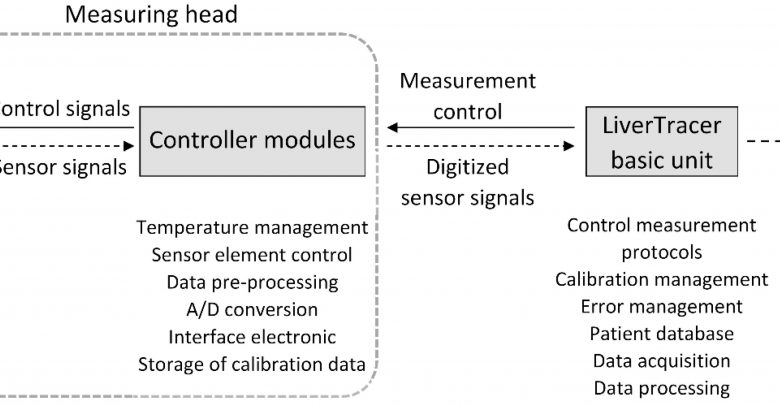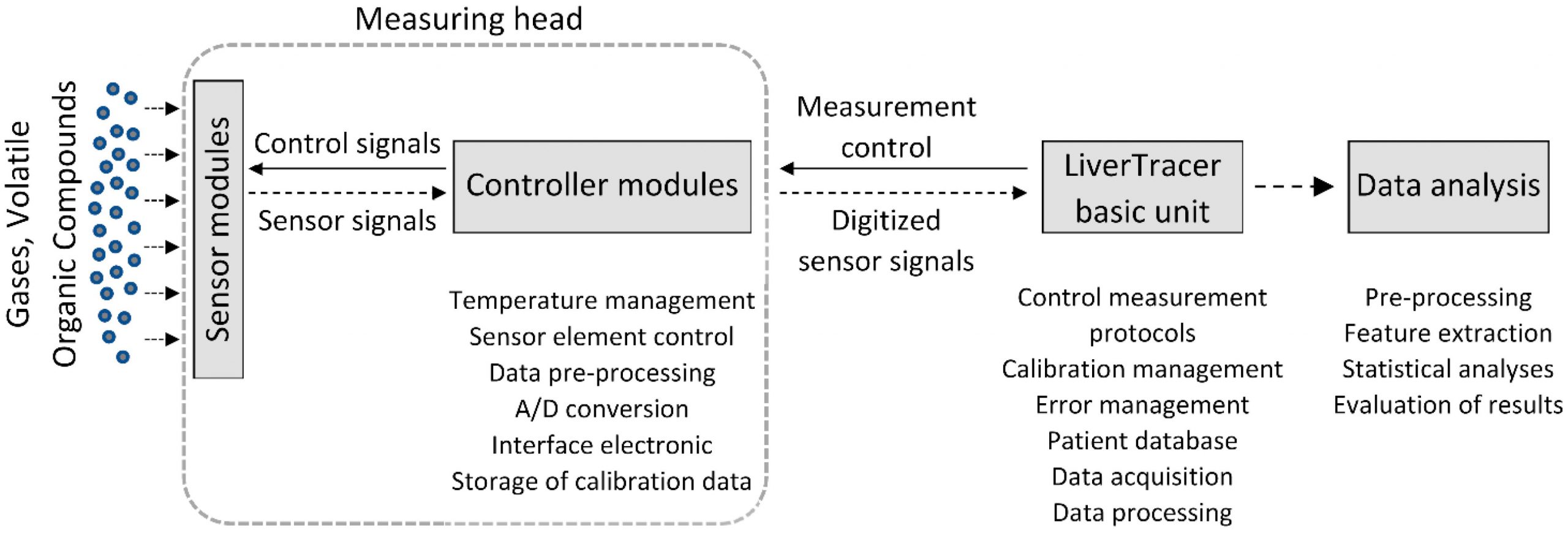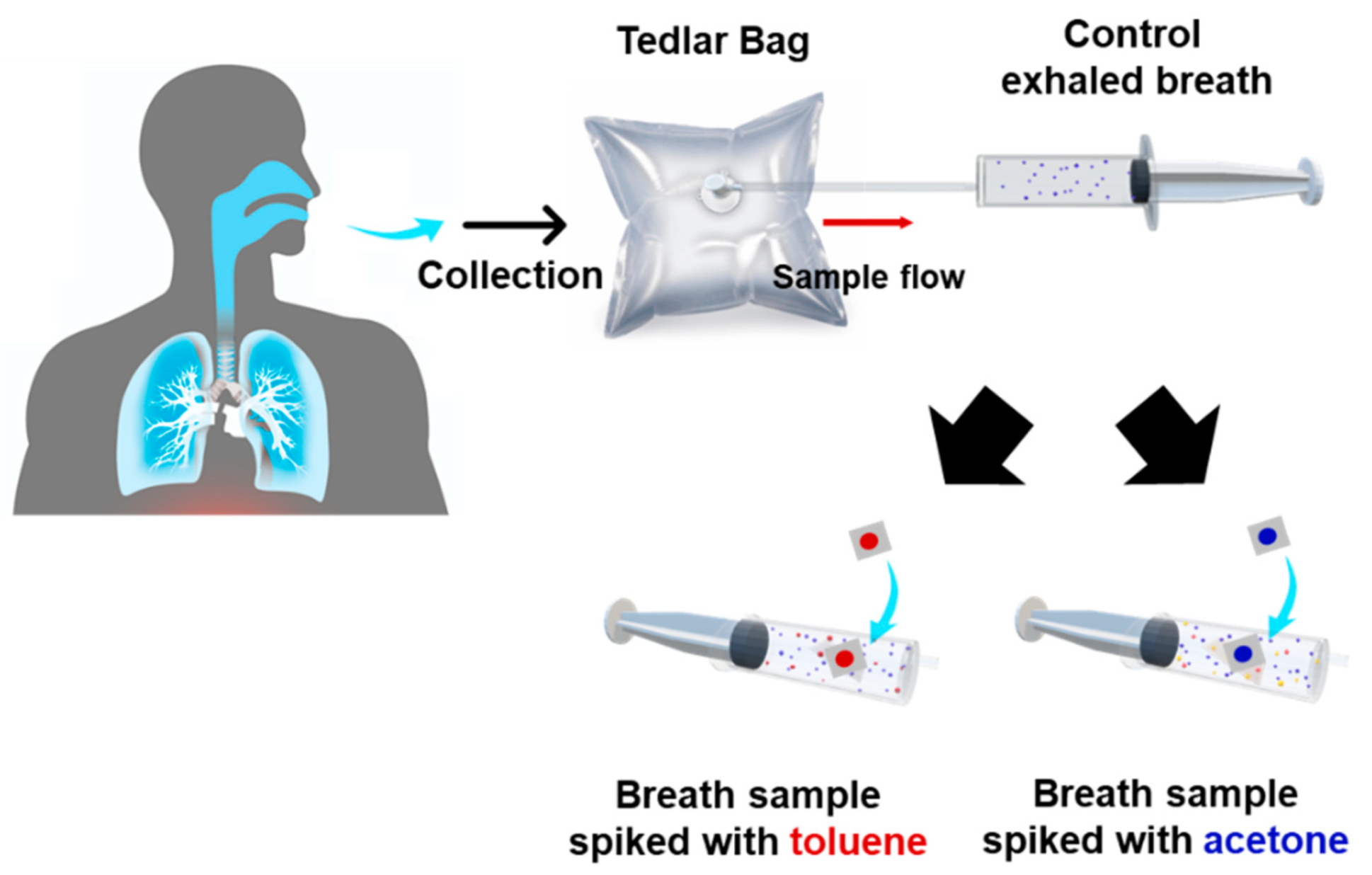Wearable E-Nose System for the Detection of Liver Dysfunction
The purpose of this exploratory study was to determine whether liver dysfunction can be generally classified using a wearable electronic nose based on semiconductor metal oxide (MOx) gas sensors, and whether the extent of this dysfunction can be quantified.

MOx gas sensors are attractive because of their simplicity, high sensitivity, low cost, and stability.

Setup of the electronic nose system “LiverTracer”
- A total of 30 participants were enrolled, 10 of them being healthy controls, 10 with compensated cirrhosis, and 10 with decompensated cirrhosis.
- Voss et al. used three sensor modules with a total of nine different MOx layers to detect reducible, easily oxidizable, and highly oxidizable gases.
- The complex data analysis in the time and non-linear dynamics domains was based on the extraction of 10 features from the sensor time series of the extracted breathing gas measurement cycles.
The sensitivity, specificity, and accuracy for distinguishing compensated and decompensated cirrhosis patients from healthy controls was 1.00. Patients with compensated and decompensated cirrhosis could be separated with a sensitivity of 0.90 (correctly classified decompensated cirrhosis), a specificity of 1.00 (correctly classified compensated cirrhosis), and an accuracy of 0.95.
This wearable, non-invasive system provides a promising tool to detect liver dysfunctions on a functional basis. Thus, it could provide valuable support in preoperative examinations or for initial diagnosis by the general practitioner, as it provides non-invasive, rapid, and cost-effective analysis results.
Join us this November in the DOS 2022 Congress and explore the the latest e-noses for disease diagnosis.
Digital Olfaction 2022 Annual Meeting
November 29-30, 2022 – Tokyo, Japan & Online
www.digital-olfaction.com




